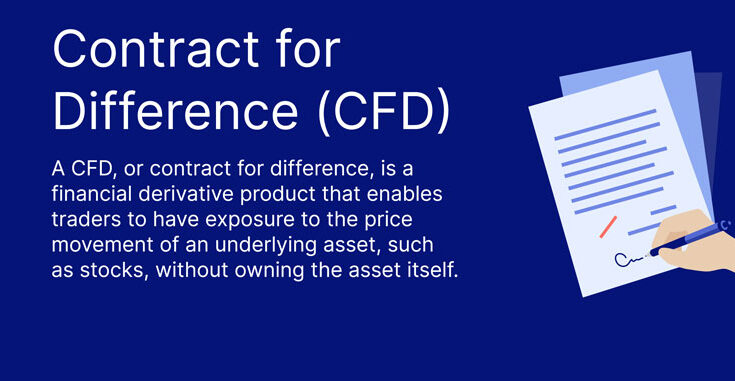Exploring New Economic Tools in Local Communities
As Southeastern Arizona continues to grow and diversify economically, residents are increasingly looking for ways to secure their financial futures. With traditional savings offering minimal returns and the cost of living rising, many individuals are turning to alternative investment strategies to build wealth, manage risk, and plan for long-term goals. One financial tool gaining attention is the Contract for Difference, or CFD.
Though CFDs are more commonly used in major financial centers, they’re becoming more accessible through digital platforms, enabling people in rural and small-town America—including here in Arizona—to explore these options from home. But before diving in, understanding how CFDs work is essential for responsible investing.
What Are CFDs and Why Are They Gaining Attention?
A Contract for Difference is a type of financial derivative that allows an investor to speculate on the price movements of assets—like stocks, commodities, or currencies—without actually owning the asset itself. Rather than buying a share of a company or a physical commodity, you enter a contract to trade on the price difference between the opening and closing value of an asset.
This method is attractive for several reasons:
- Flexibility: Trade rising or falling markets.
- Leverage: Control larger positions with smaller capital.
- Diverse markets: Access global stocks, forex, indices, and more.
While these advantages sound appealing, CFDs also carry a high level of risk, particularly for those without proper education or experience. For beginners, it’s critical to learn the mechanics and risks before getting started.
This is why many new investors begin by exploring how to learn to trade using structured guides and signal-based trading tools. These platforms provide step-by-step support and often include demo accounts, making them ideal for cautious first-timers in our local communities.
The Basics: How CFDs Actually Work
Understanding CFDs starts with breaking down the core process:
- Choose an Asset – This could be a company’s stock, a commodity like oil, or even a currency pair.
- Open a Position – You can go “long” (buy) if you believe the price will rise, or “short” (sell) if you expect it to fall.
- Monitor the Movement – If the asset moves in your favor, you earn the difference; if not, you incur a loss.
- Close the Position – This locks in your profit or loss, based on the difference between the open and close price.
Unlike purchasing physical assets, you never own the underlying security—you’re simply speculating on its movement.
Comparing CFDs to Other Financial Tools
For Arizona residents considering how to make the most of their money, it’s helpful to see how CFDs compare with other common investment approaches:
| Feature | CFDs | Stocks | Savings Accounts |
| Ownership | No | Yes | Yes (cash) |
| Market Access | Global markets | Typically domestic or major global companies | Local banks |
| Risk Level | High (due to leverage) | Moderate | Low |
| Potential Return | High (with risk) | Moderate | Low |
| Liquidity | High | High | Very High |
| Complexity | Advanced | Moderate | Low |
This comparison shows that while CFDs can be part of a dynamic financial strategy, they should be approached with caution and ideally only after gaining sufficient knowledge and practice.
Risks to Keep in Mind
No investment comes without risk, but CFDs carry particular considerations that investors should weigh carefully:
- Leverage magnifies both gains and losses
- Market volatility can lead to quick, unexpected losses
- Not regulated the same way as stock trading in some jurisdictions
- Requires ongoing market monitoring and timely decision-making
For residents unfamiliar with active trading or without much financial background, this can seem overwhelming. However, by starting with educational resources and simulated accounts, individuals can gradually build confidence and competence.
Who Should Consider CFDs?
CFDs are not for everyone, and they certainly aren’t a replacement for traditional savings or retirement accounts. However, they may suit individuals who:
- Are financially stable and have disposable income to invest
- Have an interest in learning how global markets operate
- Are comfortable with technology and using online trading platforms
- Want to diversify their financial knowledge or test new strategies in a controlled environment
Local entrepreneurs, tech-savvy professionals, and those already interested in economics or finance may find CFDs to be an intellectually engaging way to manage a portion of their investment strategy.
Responsible Investing in Rural and Regional Communities
In places like Southeastern Arizona, financial literacy plays a crucial role in community development. As families plan for college, retirement, or starting small businesses, understanding different investment tools can help individuals make more informed decisions.
Here are some tips to keep in mind:
- Start small and only use money you can afford to lose
- Use demo accounts to practice before committing real funds
- Choose reputable platforms that offer support and regulation
- Stay informed by following market news, tutorials, and community resources
- Avoid emotional trading; stick to your plan
With cautious steps and the right mindset, exploring tools like CFDs can be one part of a broader approach to financial awareness and resilience within our local economy.









